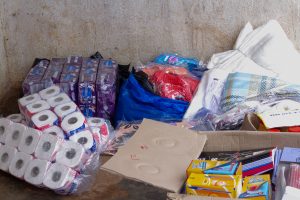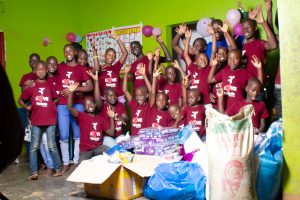Cervical cancer develops in women’s cervix (this is the entrance to the uterus from the vagina). According to the World Health Organization, almost all cervical cancer cases (99%) are linked to infection with high/risk human papillomaviruses (HPV). It is an extremely common virus transmitted through sexual contact. Cervical cancer is ranked fourth most common cancer in women.
Cancer is a result of uncontrolled division and the growth of abnormal cells. Some cells in our body have a set lifespan and when they die, the body generates new cells to replace them. Sometimes they may not die and continue dividing which results in an excessive buildup cell that eventually forms a lump or tumor. Some of the risk factors that may increase
the risk of developing cervical cancer include:
- HPV is a sexually transmitted disease.
- Having many sexual partners or even becoming sexually active at an early age. Women who have had many sexual partners generally have a higher risk of HPV infection.
- Smoking also increases the risk of developing cervical cancer as well as other types.
- A weakened immune system that’s to say those with HIV/AIDS and people who have undergone a transplant leading to the use of immune-suppressive medications.
- Birth control pills when used for a long term slightly raise a woman’s risk.
- Sexually transmitted diseases for example gonorrhea and syphilis increase the risk of developing cervical cancer.
- The socio-economic status rates appear to be higher in areas where incomes are low. Checkups are expensive for all people mostly in rural areas.
According to data on HPV, Uganda has a population of 12.3 million women age 15 years and older who are at risk of developing cervical cancer. Each year, 6959 women are diagnosed with cervical cancer, and 4607 die from it. (Human Papillomavirus and Related Cancers Fact Sheet 2021).
Uganda is said to have the highest cervical cancer incidence in the world (54.8 per 100,000). Yet it is entirely preventable through vaccination and screening, yet it remains one of the gravest threats to women’s lives according to the World Health Organization. The increase in Uganda is a result of limited screening access and infrastructure.
There are stages of cervical cancer as listed below according to the National Cervical Cancer Coalition.
- Stage 0: Carcinoma in situ. Abnormal cells in the innermost lining of the cervix.
- Stage 1: Here cancer cells have grown from the surface into deeper tissues of the cervix and possibly into the uterus.
- On stage 2: Cancer has now moved beyond the cervix and the uterus, but not as far as the walls of the pelvis or the lower part of the vagina.
- Stage 3: Cancerous spread to the pelvic sidewall or the lower third of the vagina and/or hydronephrosis or a non-functioning kidney that is incident to invasion of the ureter. Here the cancer cells are present in the lower part of the vagina or the walls of the pelvis and they may be blocking the ureters. The tubes that carry urine from the bladder.
- Stage 4: Cancerous spread beyond the true pelvis or into the mucosa of the bladder or rectum. It may or may not affect the lymph nodes. Later it will spread to distant organs, including the liver, bones, lungs, and lymph nodes.
Below are some of the symptoms of cervical cancer;
- The bleeding between periods
- There is also bleeding after sexual intercourse
- Bleeding in post-menopausal women
- The discomfort during sexual intercourse
- Vaginal discharge with a strong odor
- Vaginal discharge tinged with blood
- Pelvic pain. These symptoms also have other causes which include infection
When detected early and managed effectively, cervical cancer is the most successfully treatable form of cancer. In late stages, cancer can also be managed with appropriate treatment and palliative care. The treatment for cervical cancer includes surgery, radiotherapy, chemotherapy, or have a combination of all those. The decision on the kind of treatment depends on several factors such as the stage of cancer as well as age and overall state of health. The early stage when cancer remains within the cervix has a success rate. For example, the use of surgery and radiation therapy may reduce the risk of recurrence. Further cancer spreads from its original area the lower the success rate tends to be. Radiation therapy and chemotherapy involve the use of chemicals and beams of high-energy X-rays or radiation to destroy cancer cells.
HOW CAN WE REDUCE THE CHANCES OF DEVELOPING CERVICAL CANCER?

January is a cervical cancer awareness month. Healthcare, medicine, and early prevention concept.
Every woman should be strict on getting the Human Papillomavirus (HPV) vaccine to reduce the frequency of cervical cancer.
Practicing safe sex by using condoms as protection against HPV infection. Having fewer sexual partners as it will reduce the higher risk of transmitting the HPV virus. This also calls for delaying the first sexual intercourse of a young woman. The longer she delays it, the lower her risk.
The women who smoke have a high risk of developing cervical cancer than people who do not smoke? So one should stop smoking.
Volunteering in Uganda opens up to everyone who is willing to volunteer with us in the health program to help create awareness about cervical cancer to women in rural and urban areas. Donations of equipment, medicines, and other things are welcomed.
Love Uganda Foundation advises all women to undergo cervical cancer screening which makes it easy to find and treat early-stage cervical cancer possible. National Cancer Institute says regular screening reduces the risk of developing or dying from cervical cancer by 80%. The collected cervical cancer screening program using HPV testing within the community-based primary health care services can increase access to screening and reduce cervical cancer rates in Uganda. The efforts are to reduce the number of women who die because of cervical.
With its partners that is Love Uganda Safaris and Tugambe.org, all care about the woman’s health. Join the cause.








 As I summarize, Gender-Based Violence must be addressed as soon as yesterday. . Reporting the cases of violence to the concerned people: like police concerned NGOs and other organizations. Volunteering in Uganda with its partners Tuyambe.Org and
As I summarize, Gender-Based Violence must be addressed as soon as yesterday. . Reporting the cases of violence to the concerned people: like police concerned NGOs and other organizations. Volunteering in Uganda with its partners Tuyambe.Org and


